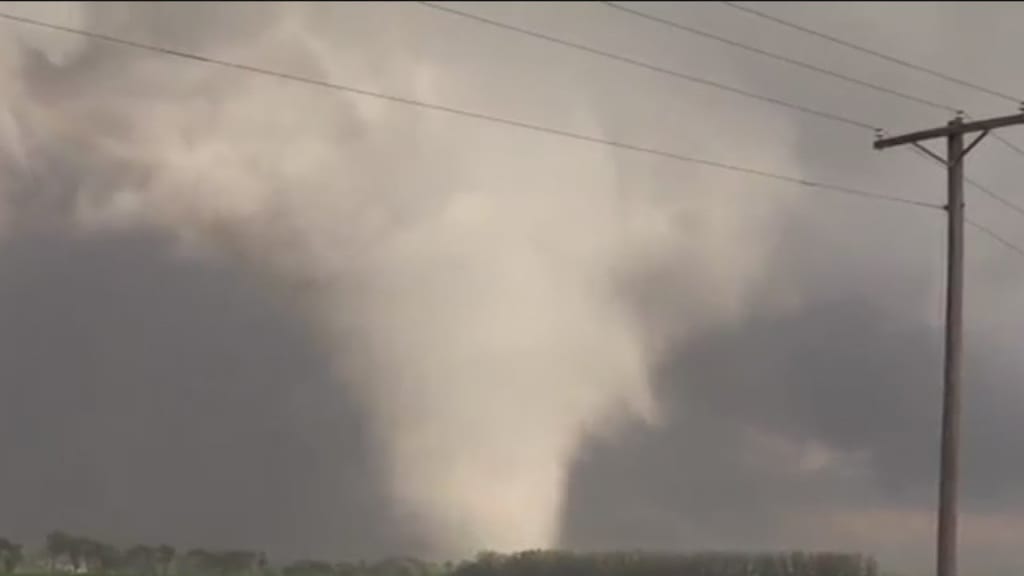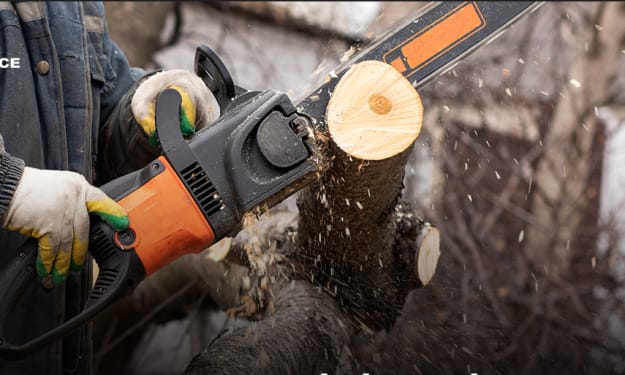Content warning
This story may contain sensitive material or discuss topics that some readers may find distressing. Reader discretion is advised. The views and opinions expressed in this story are those of the author and do not necessarily reflect the official policy or position of Vocal.
The Devastation and Aftermath:
Recounting the Chicago Tornado

Introduction:
On a fateful day, the city of Chicago experienced a catastrophic event that left a lasting impact on its residents and infrastructure. A powerful tornado tore through the city, causing widespread destruction and leaving behind a trail of devastation. In this article, we delve into the details of the Chicago tornado, recounting the events leading up to it, the immediate aftermath, the recovery efforts, and the lessons learned from this natural disaster.
Part 1: The Build-Up to the Tornado
The tornado in Chicago formed as a result of a convergence of atmospheric conditions, including unstable air masses and intense wind shears. Weather forecasters had issued warnings of severe storms in the area, but the magnitude of the tornado caught many by surprise. As the storm system intensified, the stage was set for a destructive tornado to make its way through the city.
Part 2: The Impact and Destruction
The tornado's path of destruction cut through several neighborhoods in Chicago, leaving a trail of devastation in its wake. Homes were ripped apart, buildings collapsed, and infrastructure was severely damaged. The powerful winds uprooted trees, scattered debris across the streets, and shattered windows. The sheer force of the tornado left residents in shock and disbelief as they witnessed their communities reduced to rubble.
Part 3: Rescue and Recovery Efforts
In the immediate aftermath of the tornado, emergency responders sprang into action, working tirelessly to rescue trapped individuals and provide medical assistance to the injured. Search and rescue teams combed through the debris, using specialized equipment to locate survivors and evacuate them to safety. Community members, volunteers, and local organizations rallied together, offering support, shelter, and supplies to those affected by the disaster.
Part 4: Assessing the Damage
As the initial rescue efforts transitioned into the recovery phase, authorities and officials began assessing the extent of the damage. Building inspectors, engineers, and city officials surveyed the affected areas, determining the structural integrity of buildings, bridges, and infrastructure. The damage assessment process helped identify areas requiring immediate attention and prioritized the allocation of resources for rebuilding efforts.
Part 5: Rebuilding and Rehabilitation
The process of rebuilding and rehabilitation began in earnest as Chicago rallied to restore its affected neighborhoods. Construction crews, contractors, and volunteers worked tirelessly to clear debris, repair damaged structures, and restore vital services such as electricity, water, and transportation. The community came together, offering support, resources, and financial aid to assist those who had lost their homes and livelihoods.
Part 6: Emotional Impact and Trauma
Beyond the physical destruction, the tornado left an emotional impact on the residents of Chicago. Many individuals and families faced the loss of their homes, possessions, and, tragically, loved ones. Dealing with the emotional trauma and grief required a concerted effort from mental health professionals, support groups, and community organizations to provide counseling and emotional support to those affected.
Part 7: Lessons Learned and Preparedness
The Chicago tornado served as a wake-up call for the city and its residents regarding the importance of disaster preparedness. The event highlighted the need for improved warning systems, enhanced emergency response protocols, and community-wide education on tornado safety. Local authorities and organizations initiated programs to educate residents on how to prepare for and respond to severe weather events, ensuring that the city would be better equipped to handle future disasters.
Part 8: Resilience and Recovery
The Chicago tornado tested the resilience of the city and its residents. Despite the immense devastation, the community banded together, demonstrating unwavering strength and determination to rebuild and recover. The spirit of resilience and solidarity propelled the city forward, inspiring individuals to support one another and work towards restoring their neighborhoods.
Conclusion:
The Chicago tornado stands as a stark reminder of the destructive power of nature and the resilience of communities in the face of adversity. The event left scars on the physical landscape and emotional well-being of the city's residents. However, through collective efforts, Chicago has made significant strides in recovering and rebuilding. The lessons learned from this natural disaster have paved the way for improved preparedness, enhanced response systems, and a stronger sense of community. As Chicago continues its journey of recovery, the city stands as a testament to the human spirit's ability to overcome challenges and rebuild even in the face of immense devastation.
About the Creator
Enjoyed the story? Support the Creator.
Subscribe for free to receive all their stories in your feed. You could also pledge your support or give them a one-off tip, letting them know you appreciate their work.





Comments
There are no comments for this story
Be the first to respond and start the conversation.